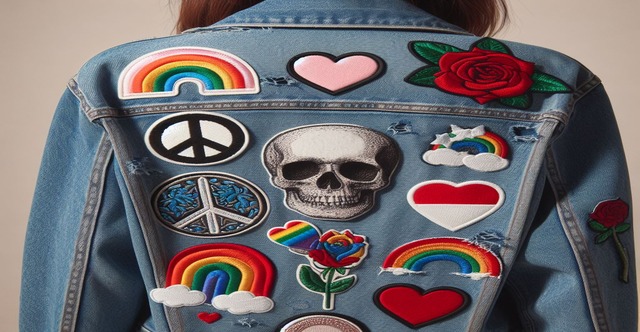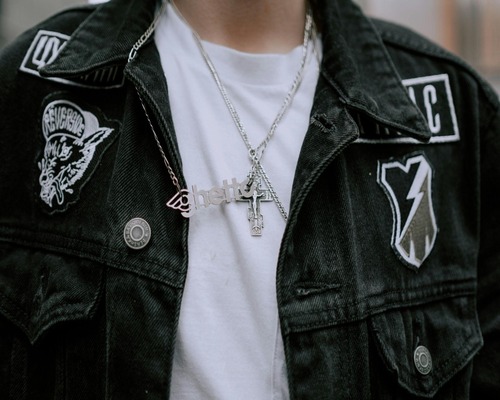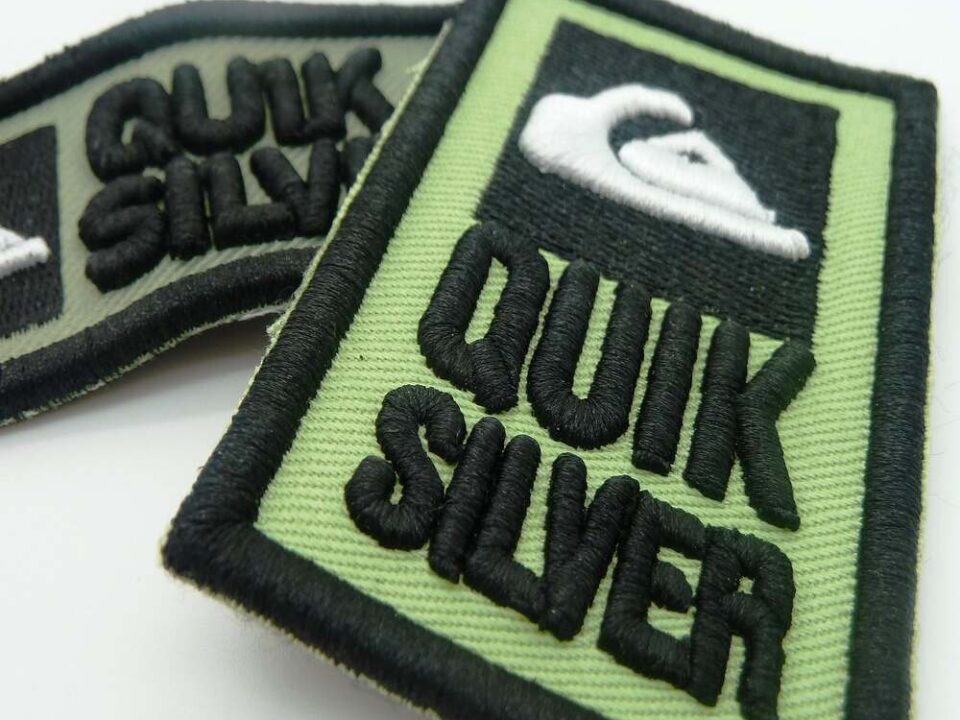What Are The Best Materials For Iron On Patches?

The Beginner’s Guide to Patches: Everything You Need to Know
December 15, 2023
The Complete Guide To Scout Patch Placement: Rules And Best Practices
January 15, 2024If you’re looking for a quick and easy solution to transform your boring clothes into statement pieces, then iron-on patches are your new best friend. They are simple to use, stylish, and reasonably priced. The catch is that you need to carefully check the material of the garment you’re adding them to because heat does not work well with all fabrics. This leaves us with the big question, what is the best material for iron on patches? Read on to get your answer.
Iron-on patches have become a popular way to customize and personalize clothing items, bags, and accessories. Whether you want to add a touch of individuality to your favorite denim jacket or breathe new life into an old backpack, choosing the right fabric is crucial for ensuring a successful application of iron on patches. In this detailed guide, we will explore the best fabric for iron on patches, taking into consideration factors such as fabric composition, weave, and overall durability.
Understanding Iron-on Patches
Before delving into the world of fabrics and questioning what material can you iron on patches, it’s essential to understand how iron-on patches work. These patches typically feature a layer of heat-activated adhesive on the back, which is activated when exposed to heat, usually from an iron. The adhesive binds the patch to the fabric, creating a permanent bond. However, not all fabrics are created equal, and picking the right one can significantly impact the success of the iron-on application.
Exploring the Best Material for Iron On Patches
1. Cotton
Cotton is a versatile and broadly used fabric that serves as an excellent canvas for iron on patches. Known for its breathability and softness, cotton allows the adhesive on the patch to bond effectively. It’s crucial to choose a fabric with a tight weave to provide a smooth and even surface for the patch. Denim, a heavyweight cotton fabric, is particularly popular for patch applications due to its durability and classic appearance and so our next point covers it in more detail.
2. Denim
Denim, deserves special mention for its popularity in the world of iron on patches. It can also be categorized as the best material for Iron on Patches. The thickness and durability of denim make it an ideal choice, especially for patches that will be applied to jackets, jeans, or bags. When using denim, it’s important to pre-wash the fabric to remove any finishes that might interfere with the adhesive bonding process.
3. Twill
Twill is a fabric known for its diagonal weave pattern, which creates a distinctive texture. This weave not only adds visual interest but also enhances the durability of the fabric. Twill fabrics, like cotton twill or polyester twill, are suitable for iron-on patches, providing a sturdy base for the adhesive to stick effectively. The diagonal weave also helps prevent the patch from fraying at the edges over time.
4. Polyester
Polyester, a synthetic fabric, is also one of the best materials for Iron on Patches. While it lacks the natural feel of cotton, polyester offers advantages such as resistance to wrinkles and greater durability.
When choosing polyester fabrics, opt for those with a medium to heavyweight and tight weave to ensure proper adhesion. Polyester blends, combining polyester with natural fibers like cotton, can also be a good compromise, offering a balance of comfort and durability.
5. Canvas
Canvas is a heavyweight fabric known for its sturdiness and durability. It is commonly used for items like tote bags, backpacks, and shoes. The dense canvas weave provides a stable surface for iron-on patches, ensuring a secure bond. When working with canvas, it’s essential to apply even pressure while ironing to guarantee the adhesive penetrates the fabric and creates a lasting attachment.
6. Rayon
Rayon, a semi-synthetic fabric made from natural cellulose fibers, can be a delicate yet suitable choice for iron on patches. While rayon is more lightweight than cotton or denim, it offers a smooth surface for patch application. It’s important to use a lower heat setting when ironing rayon fabrics to prevent damage. Additionally, consider placing a thin cotton cloth between the iron and the rayon fabric to protect it from direct heat.
7. Wool
You may find it odd, but wool also makes it to the list of best materials for Iron on Patches. It is known for its warmth and comfort and can be an unconventional yet interesting choice for iron on patches, especially on winter garments. However, wool requires extra care during the ironing process. Use a low-heat setting and a pressing cloth to avoid damaging the fibers. Wool blends, combining wool with other fibers, can provide a more forgiving surface for iron-on patches.
8. Jersey Knit
Jersey knit fabrics, commonly used in T-shirts and casual wear, are known for their stretch and comfort. While these fabrics may be trickier to work with due to their stretchiness, they can be suitable for smaller, lighter patches. It’s essential to stabilize the fabric by using an iron on interfacing on the back before attaching the patch to prevent distortion.
Tips for Successful Iron On Patch Application
Regardless of the fabric chosen, following these tips will help ensure a successful and long-lasting application of iron-on patches:
1. Pre-wash the Fabric
Washing the fabric before applying the patch removes any sizing or finishes that may interfere with the adhesive bonding process.
2. Use Even-Heat and Pressure
Apply heat evenly across the patch, using the recommended temperature setting for the chosen fabric. Apply firm and even pressure to ensure the adhesive bonds uniformly.
3. Protect the Fabric
Place a thin cotton or pressing cloth between the iron and the fabric to prevent direct heat exposure, especially for delicate fabrics like rayon or wool.
4. Allow for Cooling Time
After ironing, allow the fabric to cool completely before handling or wearing the garment. This ensures the adhesive is fully set and creates a secure bond.
Parting Thoughts
Choosing the right fabric is a crucial step in the process of attaching iron on patches. While cotton and denim are timeless favorites, other fabrics like twill, polyester, canvas, rayon, wool, and jersey knit offer unique characteristics that cater to different preferences and styles.
By understanding the properties of each fabric and following proper application techniques, you can select the best material for Iron on Patches and confidently embark on your journey of customizing and personalizing your wardrobe with them.
Also, if you’re looking for some trendy and affordable, good-quality iron-on patches; you should check out anything Chenille. We promise to make the process of selecting and delivering a smooth ride, giving you the best patches that will add to the beauty of your fabric.




